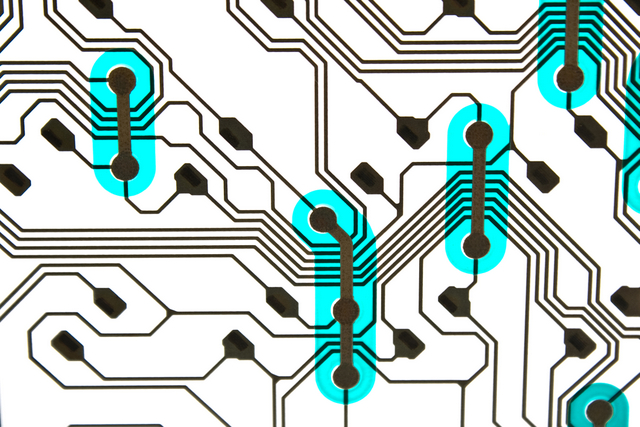
Much of our Attack the Tariff campaign is focused on market-based innovations that improve the upfront costs and long-term value for a variety of solar projects. But state-based solutions and local movements often make the biggest impact. In a series of white papers this year, the Solar Energy Industries Association (SEIA) made a solid case for how regulators and utilities could lay the ground work for a more modern-day grid that takes better advantage of distributed energy resources.
“When states develop fair compensation mechanisms for distributed energy resources (DER), the result is a modern electric grid that better serves the needs of all its customers,” said Sean Gallagher, SEIA’s vice president of state affairs. “The case studies highlighted in our report can serve as a model for other states interested in grid modernization and the economic benefits that result.”
We recommend reading the whole thing. Our big takeaway is just how imperative it is for utilities to be more transparent with their data, forecasts and calculations. We need to get more voices in the room to offer solutions. What locations in an area need which specific upgrades? For what time of year? For what time of day?
Transparency
We all already know utility transparency is an issue, but when the possibilities for grid modernization are laid out as SEIA has done in this series, the lack of transparency seems more inexcusable than ever.
Our favorite concept from the report came in part four, Getting More Granular: How Value of Location and Time May Change Compensation for Distributed Energy Resources.
Locational value can be used to guide resources to high value locations. Utilities can create, and should publish maps showing the specific locations of any needs on the distribution system, the specific grid constraints to avoid the need (e.g., high loads during hot late summer afternoons), and the value of the avoidance in terms of dollars per amount of capacity. If a developer knows in advance that there will be a utility solicitation for the identified needs, it can begin seeking customers or project sites in anticipation of the opportunity to bid in its projects.
The report continues in that section to lay out a basis for compensation:
In addition to competitive utility solicitations, there are alternative means of providing targeted tariffs, programs or incentives to drive DER to locations to meet identified needs. If identified needs are too small or have too short of a lead time to be met through a competitive solicitation, the utility could have a tariff- or program-based mechanism that can step in on short notice.
For example, voltage issues are often very isolated and managed with small utility investments. However, smart inverters are increasingly being deployed widely and can be used to provide voltage management services in the locations where a utility has challenges managing voltage within an acceptable range.
In addition, tariffs enable customers of all stripes to adopt solar and other DER, which delivers the generalized grid benefits we discuss, but also ensures that a state’s clean energy market grows equitably in a manner that distributes the social, environmental, and economic benefits to all ratepayers. This is an emerging topic and it is expected that California’s Integrated Distributed Energy Resources proceeding will explore non-solicitation based sourcing mechanisms.
So, there needs to be more transparency for developers and engineers to jump in and propose solutions, but there also needs to be more general transparency for the public to better understand how electricity gets to their house, what exactly it costs, and what alternatives could look like. Each small decision is super complicated, but zooming back out and considering the broad strokes from the point of view of an actual home owner would be revealing.
Changing incentives
In part five, which considers DER and non-wires solutions, SEIA makes the case that enhanced distribution system planning should incorporate the following key features:
• DER growth scenarios to inform grid planners where organic DER growth can be expected and where incremental DER deployment is needed.
• Hosting capacity analyses to determine DER hosting capacity limits on the distribution system to inform grid planners where additional investments may be needed to enable higher penetrations of DER.
• A methodology for fully valuing distributed energy resources to ensure proper price signals
• A transparent evaluation process by which NWS can be measured against traditional utility investments to determine the best investment for ratepayers.
Distribution utilities often make money on the construction of substations and other major capital projects. By avoiding those expenditures with solar or other DER, utilities would lose revenue opportunities, which is obviously a disincentive. This is why in California and New York, both states leading the way into a new era of transparency and collaboration, regulators have created compensation mechanisms to remove this potential bias.
This approach has allowed Southern California Edison to acquire about 260 MW of location-specific DER, 50 MW of which is distributed solar. In New York, the Public Service Commission agreed to defer the construction of a $1.5 billion substation, instead having Con Ed meet the forecasted load with 17 MW of customer-sided solutions and 52 MW of non-traditional utility-sided solutions by mid-2018. The overall budget here was only $200 million, of which only about $69 million was spent. The remaining money will be used to defer additional investments.
Bottom line, this series illustrates that if you started the grid from scratch in 2018, knowing what we know, and with the technology we have, there is just no way you’d arrive at the current arrangement and business model. Having utilities prioritize DER with the same long-term, capital intensive strategizing that they current apply, could be the most impactful U.S. innovation this century.
— Solar Builder magazine
[source: https://solarbuildermag.com/news/how-a-transparent-modern-grid-properly-values-solar-der/]


Leave a Reply
You must be logged in to post a comment.